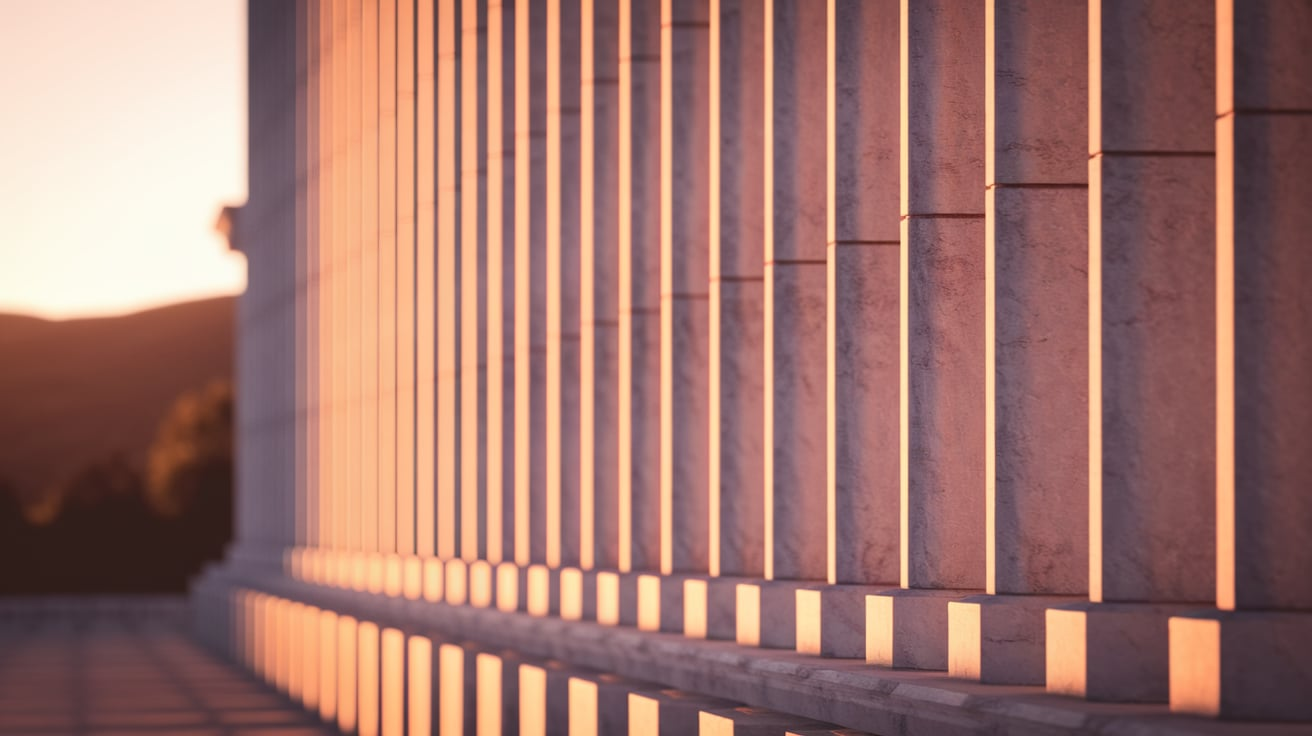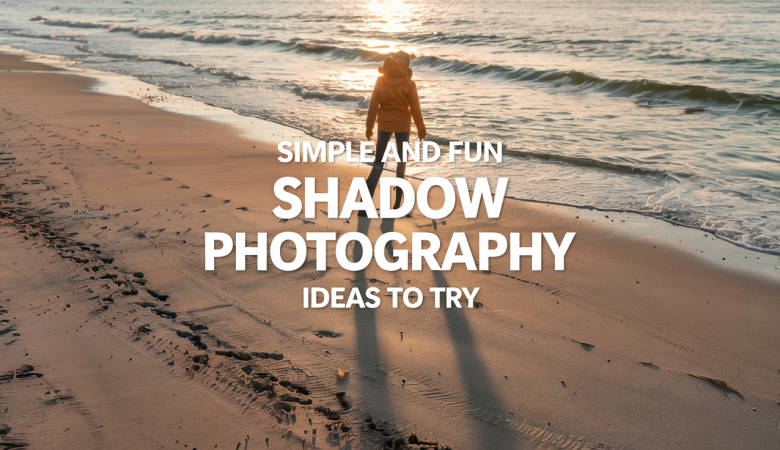What’s the difference between a forgettable snapshot and a photo that makes people stop scrolling? Often, it comes down to one simple thing: vertical lines.
Think about tall trees reaching for the sky, city skyscrapers, or even a simple fence post. These lines aren’t just there by chance. They’re powerful tools that can transform an ordinary photo into something special.
Vertical lines guide your eyes through a picture. They create a sense of height and strength that can make your photos stand out from the crowd.
The good news? You don’t need fancy equipment to use this trick. Let’s see how these simple straight lines can take your photography to new heights!
What are Vertical Lines in Photography?
Vertical lines are straight elements that run up and down in your photo frame. In design terms, they follow the y-axis, creating a feeling of height and upward movement.
Vertical lines are almost everywhere. The most common examples include tall buildings and skyscrapers, tree trunks, lamp posts, doorways, and even people standing upright.
Unlike horizontal lines that create a sense of calm and stability, vertical lines bring energy and drama to your photos.
Horizontal lines make viewers’ eyes move side to side, while vertical lines pull the gaze upward, creating more visual tension and excitement in your image.
The Difference Between Vertical and Horizontal Lines in Photography
Understanding how vertical and horizontal lines affect your photos differently is key to making smart composition choices. Both types of lines are powerful, but they create very different feelings in your images.
| Feature | Vertical Lines | Horizontal Lines |
|---|---|---|
| Visual Movement | Guide eyes upward | Move eyes side to side |
| Feeling Created | Energy, drama, tension | Calm, peace, stability |
| Symbolism | Growth, strength, power | Rest, tranquility, foundation |
| Common Examples | Trees, buildings, people standing | Horizons, roads, sleeping people |
| Composition Effect | Creates height and depth | Adds width and breadth |
| Emotional Impact | Active, dynamic, ambitious | Passive, restful, grounded |
| Best Used For | Creating drama, emphasizing height | Establishing setting, showing vastness |
The best photos often use both types of lines to create balance. For example, a tall lighthouse (vertical) against a wide ocean horizon (horizontal) creates visual interest through contrast.
By understanding what each type of line brings to your image, you can make more intentional choices about when and how to use them.
What Do Vertical Lines Convey in an Image?
Vertical lines speak a powerful visual language that viewers feel instantly, even if they don’t realize it. Here’s what these simple up-and-down elements can say in your photos:
- Strength and power: Vertical lines suggest firmness and solidity, making your subject appear strong and unmovable
- Height and growth: They draw the eye upward, creating a sense of reaching toward the sky or expanding beyond limits
- Order and structure: Straight up-and-down lines bring a feeling of organization and deliberate design to your photos
- Dignity and formality: Vertical lines often make a scene feel more serious or important
- Isolation: A single vertical line amid horizontal elements can create a feeling of standing alone or being unique
- Authority: Tall vertical structures like skyscrapers or monuments convey a sense of importance and command respect
- Aspiration: Upward lines suggest goals, ambition, and the desire to reach higher
- Connection: They can symbolize a link between earth and sky, the physical and spiritual worlds
How to Use Vertical Lines for Stronger Compositions
Ready to take your photos to the next level? These simple techniques will help you harness the power of vertical lines to create more striking images.
Place Verticals Along the Rule of Thirds
The rule of thirds divides your frame into a 3×3 grid. Placing vertical lines along these grid lines creates balance and visual interest. Try positioning a tree trunk or building edge on one of the vertical third lines rather than in the center of your frame.
Create Pathways for the Eye
Vertical lines naturally pull the viewer’s gaze upward through your image. Use this to your advantage by placing important elements along this visual pathway. For example, a row of lamp posts can guide the eye toward a distant mountain or skyline.
Frame Your Subject with Vertical Elements
Use vertical lines on both sides of your frame to create a natural border around your main subject. Think of shooting through two trees to focus attention on what’s between them, or using doorways to frame a person standing inside.
Play with Symmetry and Repetition
Multiple vertical lines placed in a pattern create rhythm in your photo. Think of a forest of tree trunks, a row of pillars, or a fence stretching into the distance. This repetition can create a powerful sense of depth and pattern.
Tips for Shooting Vertical Lines Like a Pro
Vertical lines can transform your photos when you know how to capture them effectively. Here are some practical tips that will help you get the most out of these powerful compositional elements:
- Bring a tripod when shooting buildings, architecture, or any scene with prominent vertical lines
- Use the bubble level on your tripod to ensure your camera is perfectly level
- Try the grid display in your camera’s viewfinder or on your phone’s screen to check if lines are straight
- Normal lenses (around 50mm) create the least distortion for vertical lines
- Be careful with wide-angle lenses as they make vertical lines appear to lean inward (keystoning)
- Position yourself at mid-height of tall buildings to minimize distortion
- Use lens correction in editing software to fix leaning lines
- Try Dutch angles (tilting the camera) to create tension or unease in your image
- Use converging verticals intentionally to emphasize height and drama
- Mix vertical and diagonal lines for more dynamic compositions
- Create abstract patterns by zooming in on just a section of vertical elements
Conclusion
Vertical lines are more than just elements in your frame; they’re powerful tools that can transform ordinary photos into eye-catching images.
By understanding how these simple straight lines create feelings of strength, growth, and energy, you can use them purposefully in your photography.
Remember, the best compositions often come from trying new perspectives. Don’t be afraid to break the rules once you understand them!
Your action step today: Take your camera out and shoot 10 photos where vertical lines are the main compositional element. You’ll be amazed at how quickly your photography improves.
Frequently Asked Questions (FAQs)
Are Vertical Lines Better than Horizontal Lines in Photography?
Not better, just different. Vertical lines add height and power, while horizontal lines create calm and stability. Use based on your photo’s mood and message.
How Can I Find Vertical Lines in Everyday Settings?
Look for trees, doors, window frames, lamp posts, and buildings. Even shadows, fences, and people standing upright offer strong vertical elements.
What Camera Settings Help Capture Strong Vertical Elements?
Use a narrow aperture (f/8–f/16) for sharpness, low ISO to reduce noise, and a tripod to keep lines straight and clean.











Leave a Reply